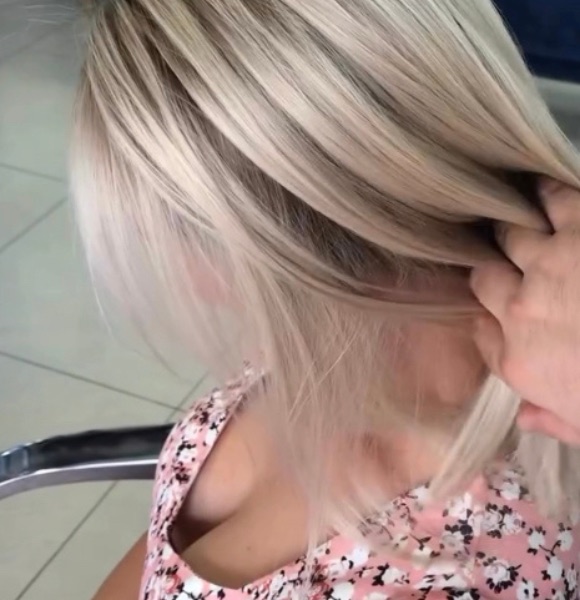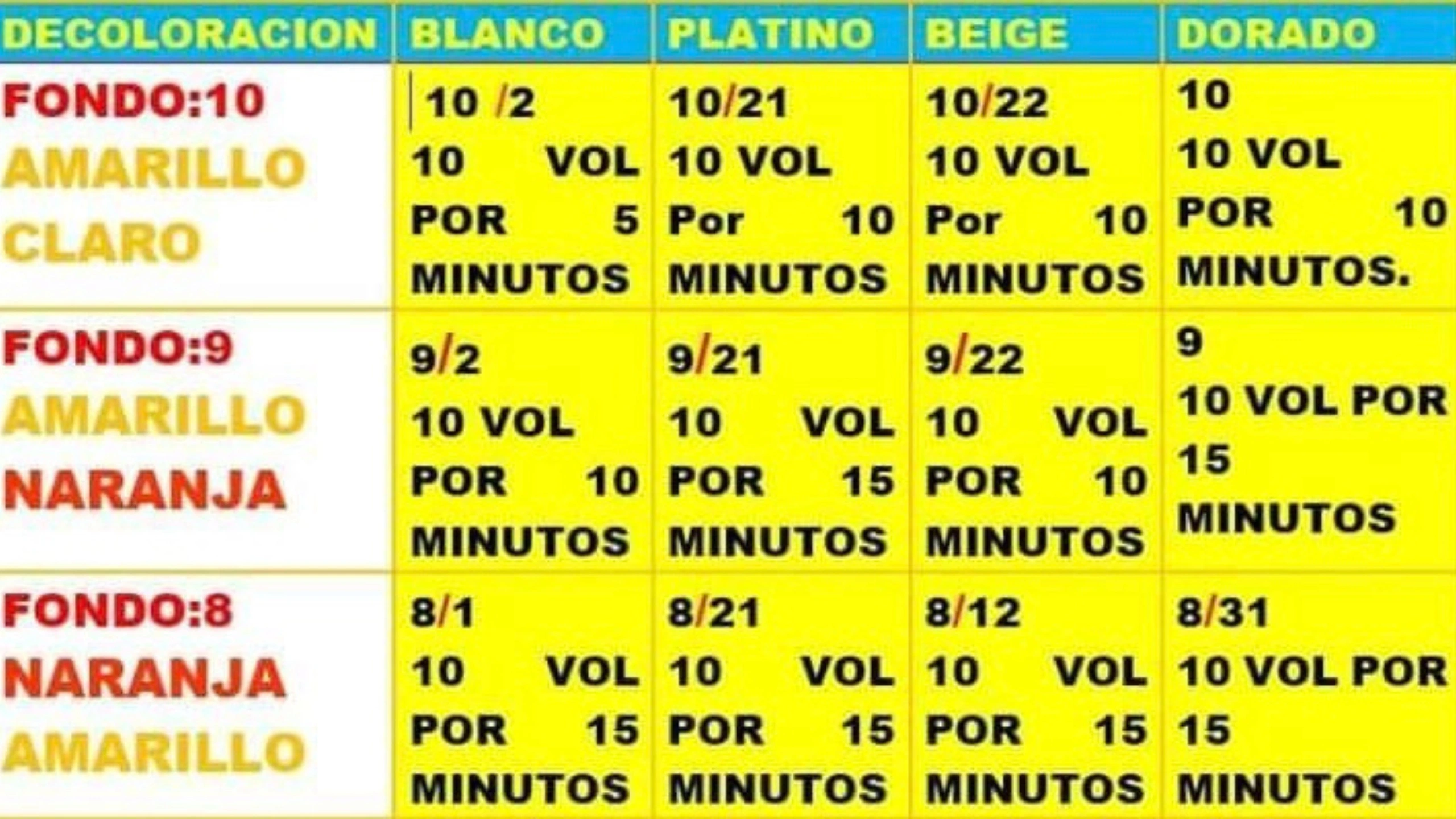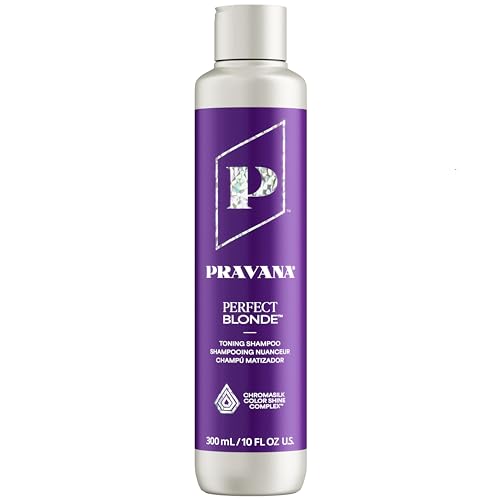Are you wondering how to tone your hair after bleaching? Are you a colorist or are you dedicated to extreme blonding, such as super blonding, and want to avoid unwanted tones such as yellow, orange or reddish? In hair coloring we know that using the hair coloring chart is fundamental, based on professional colorimetry, so that you can learn how to neutralize correctly and achieve flawless cool blondes, pearly or platinum blondes.
If you still don’t know what level of bleaching you need to apply the correct shade, I recommend you read this guide first. guide on hair bleaching levels.
What is hair coloring?
Hair coloring is essential after bleaching if you are looking for cool blonde, pearl or platinum tones.
It is the process of neutralizing or modifying the residual tones that remain in the hair after one or more bleachings. It is the key to transforming a warm bleaching base (yellow, orange or red) into a cool blonde, beige or white.

Hair shading is based on the principles of the chromatic circle, using opposite colors to cancel or balance unwanted highlights.
Why is it important to use a shading table?
The hair shade chart is a professional tool that tells you what color to use based on the lightening background you achieved. Using the correct chart avoids common mistakes such as:
– Blondes with orange or yellow tones that won’t go away
– Gray or greenish shades due to incorrect choice of colors
– Loss of time and damage due to bad shading
A good chart will guide you step-by-step to choose the right shade of the the right shade of hair colorwhether with hair dyes, pigmented shampoos or mascaras.
Shading table according to discoloration background
Level of discoloration Residual color Color for shading (according to chromatic circle) Suggested shades
5 – Light brown Orange red Blue-green 5.17, 5.11
6 – Dark blond Orange Blue 6.1, 6.11, 6.17
7 – Medium blond Orange-yellow Blue-violet 7.1, 7.21, 7.11
8 – Light blond Yellow Violet 8.1, 8.11, 8.2
9 – Very light blond Pale yellow Soft violet 9.1, 9.12, 9.2
10 – Extra light blond Very pale yellow Pearly violet 10.1, 10.12, 10.21
How do you know which shade to use for shading?
The key is to identifying the clarification background. After bleaching, observe the low residual tone. neutral white light. Then, apply the opposite color in the chromatic circle to neutralize it.
For example:
– If your hair is yellow, use violet
– If your hair is orange, use blue
– If the tone is orange-yellow, use blue-violet
Shade chart according to desired result
Desired result Necessary reflection Suggested shades (according to professional brands)
Cool ash blonde .1 (ash) 9.1, 10.1, 8.1
Pearlized blonde .2 (iridescent) 10.2, 9.21, 10.21
White/platinum blonde .11 (double ash) 10.11, 10.1 + blue or violet concealer
Neutral beige blonde .13 (golden ash) 9.13, 10.13
Warm golden blonde .3 (golden) 9.3, 10.3
What products are used to mattify hair?
There are different options for shading:
1. Demi-permanent or permanent dyes
Ideal for shading the hair and giving depth and duration to the tone. To be applied with low oxidant (5-10 volumes).
They contain violet, blue or pearl pigments. They are softer and help to maintain the color between shades.
3. Pigmented masks
Moisturizes while adding color. Perfect for light blondes and to maintain the shade without damaging.
Tips for perfect shading
– Always evaluate the actual background before applying color.
– If the hair is very porous, do a pre-pigmentation or filling pre-pigmentation or filler.
– Do not shade on bleach-saturated hair: rinse, dry and evaluate.
– Use professional brands and respect exposure times.
– Test on a test strand before coloring the whole hair.
Conclusion
The hair coloring table is the key to mastering professional hair coloring. If you work with techniques like superblonding, doing 3 bleachings with 20 volumes and one with 10 can give you a dream result, but only if you shade correctly. Choose the ideal shade, neutralize unwanted highlights and you will achieve high-impact cool, pearly or platinum blondes.
Remember: a good color is not only achieved by bleaching, but also by shading with but by shading with technique, knowledge and precision..
Frequently asked questions on hair coloring
When should hair be colored?
The hair should be colored immediately after bleachingonce you have reached the desired desired lightening background. It is crucial to do it with the hair clean, free of product residue, and slightly damp or dry, depending on the type of matting agent to be used.depending on the type of matting agent to be used.
Can badly bleached hair be colored?
Yes, but be careful. If the lightening background is not even (e.g., orange areas and yellow areas), the ideal is to level the bottom first or use a mix of matting agents with varying cool tones. If not corrected, the result will be uneven or grayish.
What happens if I make a wrong nuance?
Bad shading can leave the hair:
– With greenish tonesif you use ash on a very light background
– Opaque grayif you apply blue where there is no orange
– Warmer stillif the shader does not neutralize enough.
– No brightness or color definition
To avoid this, always be guided by a reliable reliable shading chartrespect the times and do not improvise with the tones.
How to read the dye code correctly
To understand the numbering of the dyes is key to accurate shading:
– The first number indicates the height level (1 = black, 10 = very light blond).
– The second number indicates the primary reflection (1 = ash, 2 = iridescent, 3 = golden, etc.).
– A third number may indicate a secondary or intensifying reflex
Examples:
– 10.1: extra light ash blonde (ideal for neutralizing pale yellow).
– 9.12: very light iridescent ash blonde (ideal for pearly blondes).
– 8.3: light golden blonde (ideal if you want a warm blonde).
Which oxidant to use for tinting?
When shading, you don’t need high volume. Use:
Target Recommended oxidant
Soft neutralization and shine 5 volumes
Medium tonalization 6 to 10 volumes
Increased coverage or fixation 10 volumes
Never use 20 or 30 volumes for shading! You can over-lighten or damage the hair, especially if it is already sensitized.
Most commonly used shading agents by colorists
Here are some of the products that colorists frequently use for hair coloring, it is essential to have recommended products.
Professional tinting dyes
– Wella Color Touch 10.1 / 10.81
– Alfaparf 10.21 / 9.12
– L’Oréal Dia Light 9.01 / 10.12
– Schwarzkopf Igora 10.1 / 9.5-1
Pigmented shampoos and masks
– Fanola No Yellow (deep violet)
– L’Oréal Silver Shampoo (soft violet gray)
– Olaplex Purple Shampoo (ideal for maintaining pearly blondes)
– Keracolor Clenditioner Toner
“how to shade blondes”, “types of blonding products”, “blonding mistakes”, “blonding dye codes”, “blonding products”, “platinum blonde without yellow”.




